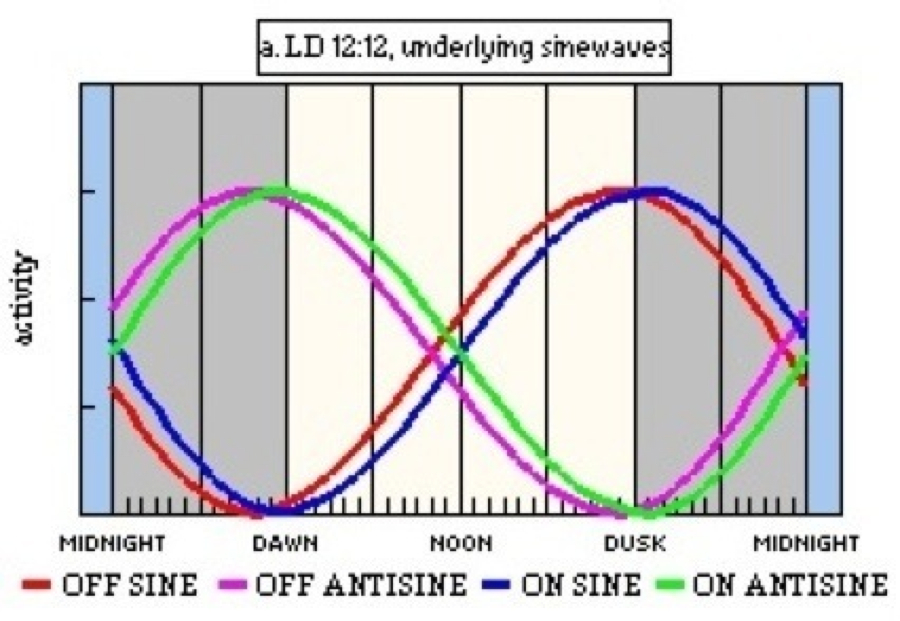
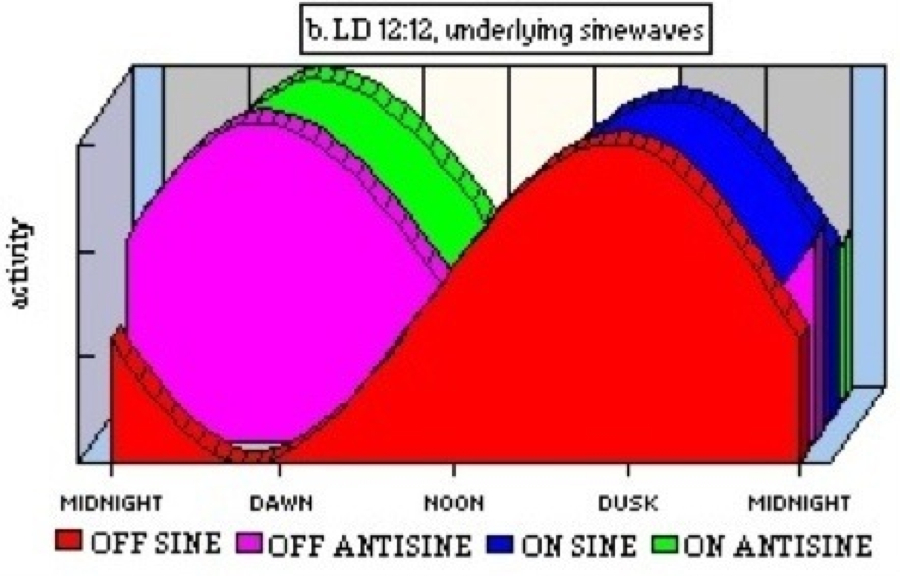

Biological Clocks in Mosquitoes - Section 2
|
1. The basic mechanism is made up of four clocks, or oscillators. Each clock exhibits a simple sinewave form of transition from minimal stimulation of activity to maximal stimulation, with a period, frequency or circadian rhythm t @ 24h (Figures 50a & 50b).
2. All the clocks run at one of two speeds; a high-light speed (Lt) and a low-light speed (Dt). The transition in speed appears to be determined by the same threshold as affects the manifestation of activity (see below). One consequence of this, even in median LD cycles, is that the two pairs of clocks are not usually in full coincidence (Figure 50a).
| Figure 50a |
 |
| Figure 50b |
 |
4. The clocks are reset by either dawn or dusk (upward or downward transitions of overall light intensity). The clocks reset by dusk are those termed OFF SINE and OFF ANTISINE, and those reset by dawn are termed ON SINE and ON ANTISINE. In stable LD regimes each resetting appears to be effected by a shift to the apogee (SINE) or the perigee (ANTISINE). In median LD cycles, the maxima of the SINE clocks fall around dusk and those of the ANTISINE clocks fall around dawn and, so, their separate effects are not readily discerned. In more extreme LD cycles, however, the effects can be separately observed with some ease (see below).
5. In most, if not all, organisms light and dark have differential effects on the amount of activity that can be manifested at any point of the sine wave. In its simplest form, this separates organisms as being light-active (Figure 50c) or dark-active (Figure 50h) and it is common for there to be a total cessation of activity in the unfavourable light condition.
| Figure 50c |
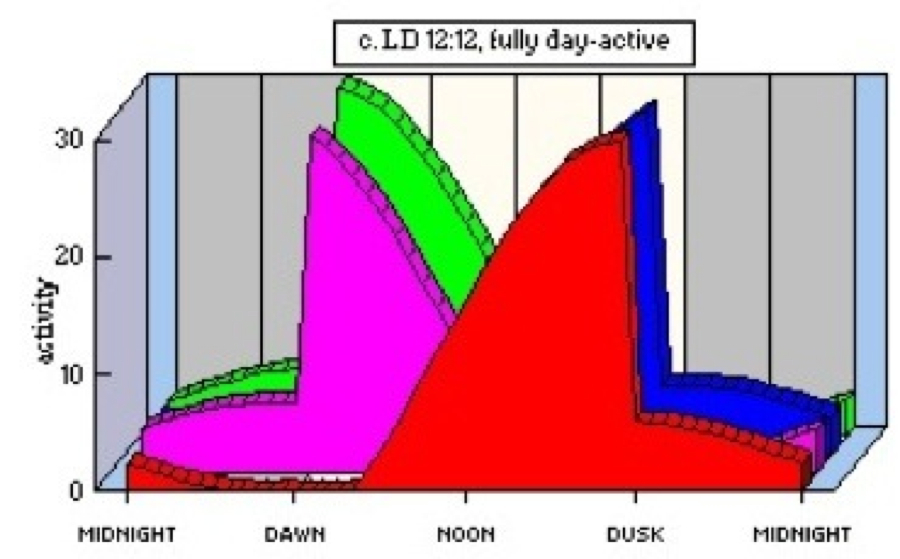 |
| Figure 50h |
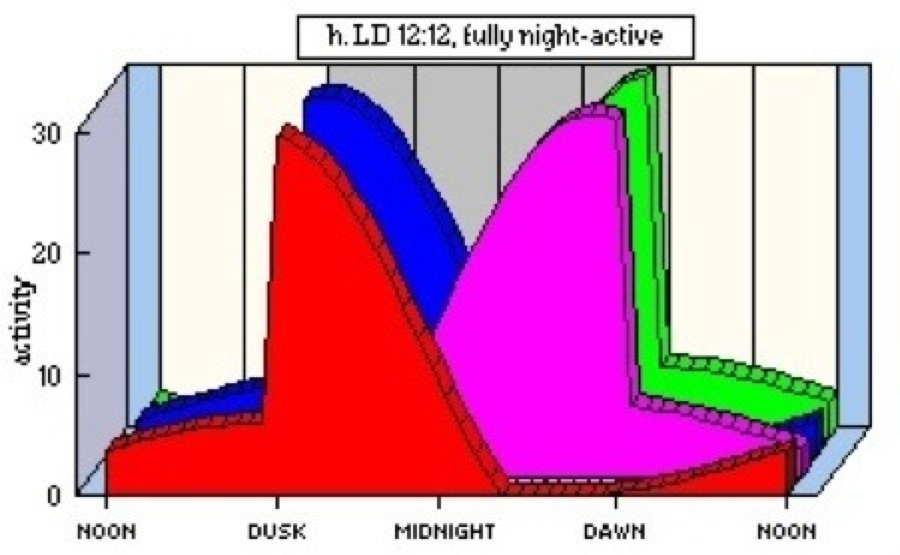 |
| Figure 50d |
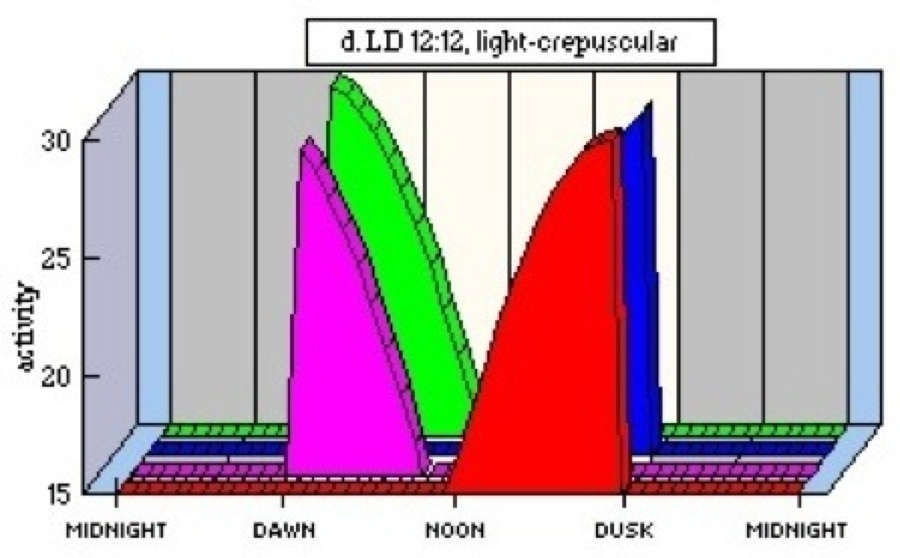 |
| Figure 50e |
 |
| Figure 50f |
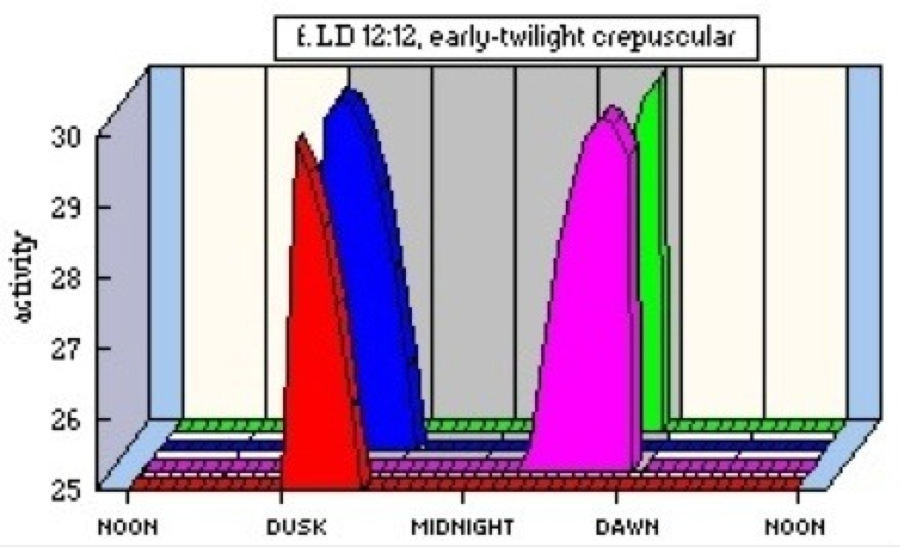 |
| Figure 50g |
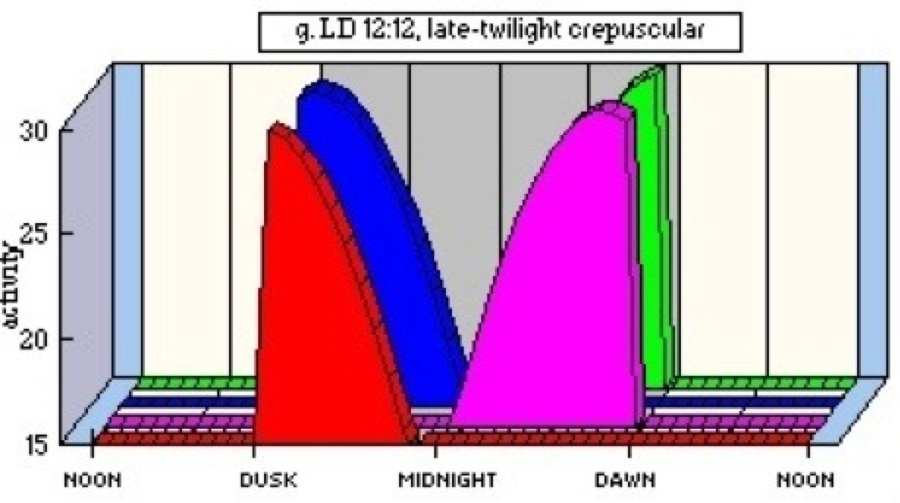 |
8.The separation of clocks in extreme LD regimes is illustrated in the examples suggested for light-active and dark-active organisms in LD 20:4 (Figures 50 i-j) and LD 4:20 (Figures l-k).
| Figure 50i |
 |
| Figure 50j |
 |
| Figure 50k |
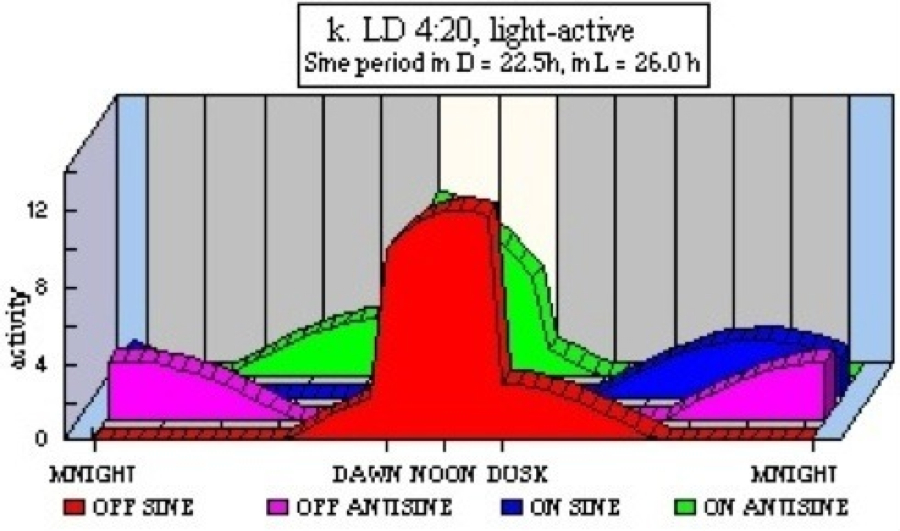 |
| Figure 50l |
 |
 NEXT
NEXT

|
©1998, 2013 - Brian Taylor CBiol FSB FRES 11, Grazingfield, Wilford, Nottingham, NG11 7FN, U.K. Comments to dr.b.taylor@ntlworld.com |